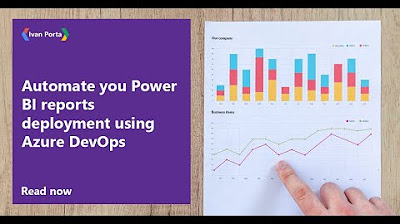The IDEAL & Practical CI / CD Pipeline - Concepts Overview
Summary
TLDRThe video provides a comprehensive guide to establishing an ideal CI/CD pipeline in cloud development. It emphasizes the importance of robust source control, automated builds, and thorough testing at various stages, including unit and integration tests. The speaker discusses best practices for managing production environments, including canary releases and traffic splitting to minimize risks. Additionally, it highlights the need for separate development and testing environments for individual developers, fostering a streamlined workflow. Throughout, the speaker shares insights from their own experience while building this setup on AWS, aiming for high software quality and efficient deployments.
Takeaways
- 😀 A robust CI/CD pipeline is essential for automating software deployment processes, reducing manual errors.
- 🛠️ Source code management should include automated build triggers and code review processes to ensure quality.
- 📊 Unit tests are crucial, with a recommended coverage of at least 90% to maintain code integrity.
- 🔗 Integration tests should validate API functionality and ensure that dependent services work correctly together.
- ⚠️ Implementing a 'one box' production deployment allows for safe traffic handling and monitoring.
- ⏳ A bake period post-deployment is important for monitoring stability before full rollout, ideally lasting 24 hours.
- 🔄 Canary releases can help in monitoring key APIs and enable automatic rollback if issues arise.
- 🌍 Isolating development, testing, and production environments helps minimize risks associated with deployments.
- 🌐 For organizations with regional deployments, create independent environments for testing and production in each region.
- 🚀 Continuous improvement of the CI/CD pipeline is encouraged, with feedback from users and developers to enhance functionality.
Q & A
What is the main purpose of the CI/CD pipeline discussed in the video?
-The main purpose of the CI/CD pipeline is to automate the software development process, ensuring reliable and efficient integration, testing, and deployment of code.
How should the testing and production environments be structured?
-The testing and production environments should be completely separate, with each having its own database and resources to prevent interference and maintain integrity.
What are the recommended practices for unit testing within the pipeline?
-It is recommended to run unit tests automatically during the build process, aiming for a high code coverage percentage, ideally around 90%.
What role do canary deployments play in the CI/CD process?
-Canary deployments allow for testing new features or changes on a small subset of users, minimizing risk by monitoring performance before a full rollout.
Why is it important for developers to have isolated environments?
-Isolated environments allow developers to work independently without affecting shared resources, facilitating experimentation and reducing the risk of introducing errors.
What should be done if issues arise after a deployment in production?
-If issues arise, rollback alarms should be triggered, allowing for quick reversion to a stable state, thus minimizing impact on users.
What does the term 'bake period' refer to in the context of deployment?
-The bake period refers to a set time after deployment during which the application is monitored for stability and performance before considering the deployment a success.
How does the presenter plan to enhance the CI/CD pipeline using AWS?
-The presenter plans to integrate various AWS services like CodePipeline, CodeBuild, and CodeDeploy to automate the CI/CD process and ensure a robust deployment framework.
What feedback mechanism is suggested for the CI/CD process?
-Feedback from viewers is encouraged to refine the pipeline further, emphasizing continuous improvement based on real-world insights.
What are some potential tools or services mentioned for implementing CI/CD?
-Potential tools include AWS services such as CodeCommit for source control, CodeBuild for building, CodeDeploy for deployment, and monitoring tools for performance tracking.
Outlines

Dieser Bereich ist nur für Premium-Benutzer verfügbar. Bitte führen Sie ein Upgrade durch, um auf diesen Abschnitt zuzugreifen.
Upgrade durchführenMindmap

Dieser Bereich ist nur für Premium-Benutzer verfügbar. Bitte führen Sie ein Upgrade durch, um auf diesen Abschnitt zuzugreifen.
Upgrade durchführenKeywords

Dieser Bereich ist nur für Premium-Benutzer verfügbar. Bitte führen Sie ein Upgrade durch, um auf diesen Abschnitt zuzugreifen.
Upgrade durchführenHighlights

Dieser Bereich ist nur für Premium-Benutzer verfügbar. Bitte führen Sie ein Upgrade durch, um auf diesen Abschnitt zuzugreifen.
Upgrade durchführenTranscripts

Dieser Bereich ist nur für Premium-Benutzer verfügbar. Bitte führen Sie ein Upgrade durch, um auf diesen Abschnitt zuzugreifen.
Upgrade durchführenWeitere ähnliche Videos ansehen

Setting Up OIDC to Get Credentials from Google Cloud

What is CICD Pipeline? CICD process explained with Hands On Project

Automate you Power BI reports deployment using Azure DevOps

GitLab: DevSecOps: Part 1/12: What is GitLab? The fundamental concepts of a DevSecOps pipeline.

CI/CD Pipeline Explained in 5 Minutes

Introduction to DevOps - CI / CD
5.0 / 5 (0 votes)
